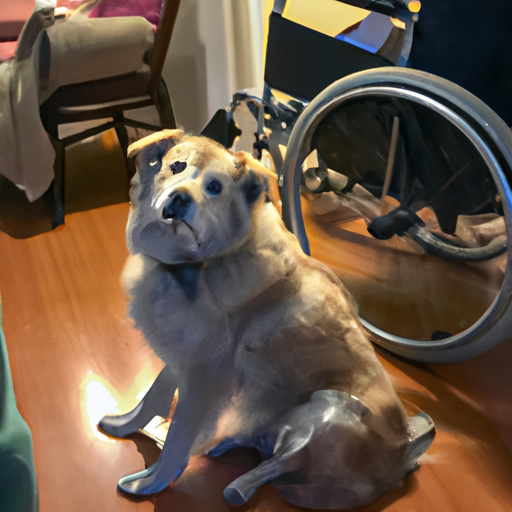Degenerative myelopathy (DM) is a progressive neurological disorder that affects the spinal cord of dogs, mainly in their later years. This insidious disease, often compared to ALS (Amyotrophic Lateral Sclerosis) in humans, initially manifests as a loss of coordination (ataxia) in the hind limbs and gradually progresses to complete paralysis. This article will provide detailed information about the final stages of degenerative myelopathy in dogs, including symptoms, progression, care, and frequently asked questions.
Table of Contents
- Understanding Degenerative Myelopathy
- Symptoms and Progression of the Final Stages
- Caregiver’s Role in Managing DM
-
Frequently Asked Questions
-
Key Takeaways
- Degenerative Myelopathy is a progressive neurological disorder that affects the spinal cord of dogs.
- The final stages involve significant loss of motor skills and eventual paralysis.
- There is no known cure, but the disease is not painful for the dog.
- Caregivers play a vital role in managing the quality of life during these stages.
Understanding Degenerative Myelopathy
Degenerative myelopathy is a non-painful disease that primarily affects older dogs, particularly breeds such as German Shepherds, Boxers, and Pembroke Welsh Corgis. It is caused by a mutation of the SOD1 gene. The disease’s onset is slow and usually unnoticed until the dog begins to wobble or drag its feet. This is often mistaken for normal aging or arthritis. The disease progresses over several months or years, leading to the final stages, where the dog becomes incapacitated. The following is an excellent resource on understanding degenerative myelopathy.
Symptoms and Progression of the Final Stages
At the onset of DM, the dog exhibits a loss of coordination in the hind limbs. As the disease progresses, the dog may struggle to stand or walk, frequently falling or stumbling. In the final stages, the following symptoms are noticed:
- Worsening limb function: The dog’s hind limbs become increasingly weak. They may cross their legs when walking, stumble more often, or not be able to stand at all.
- Loss of bladder and bowel control: As the disease progresses, the dog may lose control over its bladder and bowel movements.
- Paralysis: Eventually, the dog becomes completely paralyzed in the hind limbs. Over time, the paralysis may also affect the front limbs.
- Trouble eating or drinking: In the very final stages, the dog may have difficulty swallowing.
It is important to note that while these symptoms are distressing, DM is not a painful disease. However, secondary complications such as pressure sores or urinary tract infections can cause discomfort. Regular vet check-ups can help manage these issues. For more information about the symptoms and stages of DM, you can visit this resource.
Caregiver’s Role in Managing DM
As a caregiver, your role is vital in managing the quality of life of a dog suffering from DM. While there is no known cure for this disease, you can take several steps to improve your dog’s comfort and well-being:
- Mobility aids: Use of harnesses or wheelchairs can help your dog move around and maintain some independence. Check out this article for some recommendations on dog wheelchairs.
- Physical therapy: Regular physical therapy can help maintain muscle mass and slow the progression of the disease.
- Nutrition: A balanced diet is crucial in maintaining overall health. For diet tips, you can refer to this guide.
- Hygiene: Due to loss of bladder and bowel control, regular cleaning is necessary to prevent infections and sores.
- Love and support: Perhaps the most important thing you can do is to provide your dog with plenty of love and support. Give them a comfortable environment and spend quality time with them.
Frequently Asked Questions
What causes degenerative myelopathy in dogs?
Degenerative myelopathy is caused by a mutation of the SOD1 gene.
Is degenerative myelopathy painful for dogs?
No, DM itself is not painful. However, secondary complications such as pressure sores or urinary tract infections can cause discomfort.
Can degenerative myelopathy be cured?
Currently, there is no known cure for DM. However, its progression can be managed through physical therapy, mobility aids, and proper care.
How long can a dog live with degenerative myelopathy?
The progression of DM varies widely between dogs. Some dogs may live for several years with the disease, while others may reach the final stages within 6 to 12 months.
Understanding the final stages of degenerative myelopathy can be distressing, but remember, as a caregiver, your support can significantly improve your dog’s quality of life. It’s about making the most of the time you have left together. That’s what truly counts. For more information on managing the final stages of DM, you can visit this comprehensive guide.



